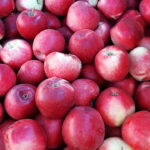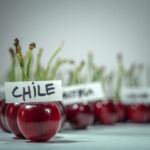Chile trials new Spanish table grape varieties

With 5.9% of Chile's table grape production dedicated to new cultivars, the industry continues trying to stay ahead of the curve in varietal development for a cornerstone fruit that accounted for more than 700,000 metric tons (MT) in exports last season.
One of the country's leading nurseries, A.N.A. Chile, looks far and wide for new genetic development and the group's latest news is its trials of new selections from Murcia in Spain.
The varieties in question fall under the umbrella of ITUM, which stands for "Investigación y Tecnología de Uva de Mesa", or "Table Grape Research and Technology" in Spanish.
ITUM was formed by 24 Murcian companies and the Murcian Research, Agricultural Development and Food Institute (IMIDA) in 2002.
At Fresh Fruit Portal, we caught up with A.N.A. Chile's vine product manager Diego Bustos to discuss prospects for the new cultivars, currently under trial from Copiapó in the country's north through to San Fernando in the central valley.
"They are varieties that have a very prolonged harvest period. That's important for them as they trade a large part of their fruit in the European market and a lot of growers harvest as orders come in. That's why the ability to maintain quality on the plant is a fundamental aspect for the commercial strategy," Bustos said.
"You can start your harvest today, wait two more weeks, harvest again and the grapes will be just as good."
The expert said the varieties were very productive with a wide spectrum of characteristics - white, red, black, hybrids, and also a variety called "Itumfifteen" that is tolerant of powdery mildew. 
"Within their usual program they have varieties with a muscat flavor (Itumtwo, Itumfourteen and Itumfifteen), very crunchy and of good size, together with varieties that have outstanding productivity like Itumfour and Itumnine," Bustos said.
He said Itumnine was harvested a bit later than Crimson Seedless, with a semi-acidic flavor, productivity of between 50-60 metric tons (MT) per hectare, a large bunch size and good berry size of 20-24mm.
Bustos emphasized this variety stood out for its crunchiness and balanced flavor that could be achieved despite its heavy loads.
"In Murcia we saw orchards that had 60MT hanging with bunches of 40-50cm and a consistency of flavor, texture and color that's surprising given the orchard with that load level can maintain productivity without being affected," Bustos said, having returned from a recent technical tour of ITUM fields in Spain.
Another variety Itumeight is harvested just a few days earlier than Crimson, is also red with excellent color, and Bustos said it was known for its crunchy grapes and wide harvesting window.
Itumfifteen, the cultivar that is tolerant to powdery mildew, is an early red grape with a berries sized between 18-23mm with a muscat flavor.
Itumsixteen is a white grape with an equivalent harvesting period to Thompson Seedless with large size, good crunchiness and high productivie capacity, while other varieties include the firm-textured mid-season white grape Itumfour, the late-harvesting white grape Itumfive and the mid-season, high-quality red grape Itumten.
"One of the main workhorses of ITUM is the genetic potential of their material. With that you give the grower the possibility that if they do the right thing in the orchard they can have success with the production of the desired kilos, both through fertility and productive capacity," Bustos said.
"Now in Chile we have the challenge of validating the pre- and post-harvest behavior of the varieties. Murcia has a different climate to the Chilean grape-growing region, added to the fact our post-harvest life requirements are greater due to the distance that separates us from the main destination markets."
The expert added the trials were underway with different variety-to-rootstock combinations, testing different table grape-growing regions throughout Chile with a "serious and responsible" approach".
















































